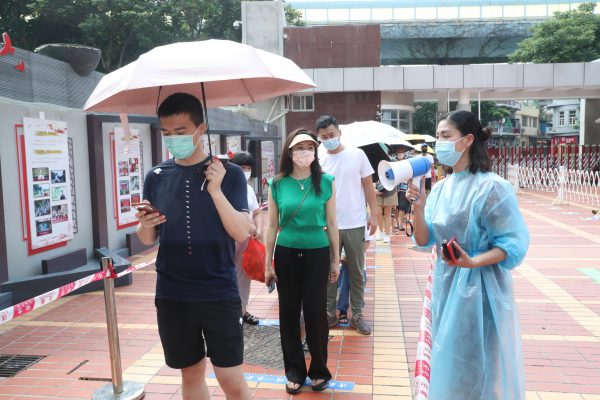But China isn’t yet ready to put the pandemic behind it, as Nick Thomas explains in our lead article this week. Indeed, by embracing a more hawkish approach towards the virus than even the Asian norm, ‘China has locked itself away from most of the world with no sign yet of a strategy to live with what experts agree will be a globally endemic disease.
Chinese authorities ruthlessly extinguished community transmission with lockdowns in the first wave of infections in early 2020, with China being one of the first countries to return to normal civil and economic life just as the catastrophes in Europe and the United States began to unfold. Since then, China has attained comparatively high vaccination coverage while transmission has been low or close to zero. The luck has run out with the Delta variant: many of China’s most important industrial regions are once again under lockdown.
China’s challenge is exceptional in its degree but not in its fundamental nature. East Asia’s pandemic ‘success stories’ share the same dilemmas in opening up — dilemmas ironically borne of their success in controlling the initial waves of the virus in 2020. As we noted in August, ‘[i]n the context of successful containment, the uncontrolled spread of the virus is as much a policy decision as diabolus ex machina’. The Delta variant of COVID-19 has changed the calculus, with the likes of Australia and New Zealand showing that slowing the spread, rather than eliminating it, is now the realistic goal once community transmission escapes.
China is no exception: ‘If [it] is to shift towards a post-pandemic normal, it will have to accept a greater likelihood of community transmissions than is presently the case’, says Thomas. But ‘there is no indication that such a scenario is acceptable to the Chinese government’.
Some of China’s challenges are distinctive. ‘The efficacy of local vaccines is the biggest hurdle the government faces in moving towards a post-pandemic normal’. The Sinovac and Sinopharm jabs have saved countless lives and won China goodwill via its ‘vaccine diplomacy’ abroad. But there’s no getting around the fact that they are less effective against the Delta variant than their western equivalents.
The Chinese government has slow-pedalled the approval of the American mRNA vaccines. A home-grown mRNA jab is being developed, but Chinese authorities don’t want to give people a reason to hold off on getting their jab because they feel that a ‘better’ vaccine is over the horizon — the exact same blunder that Australian authorities made.
‘For now, China exists inside its own bubble … a safe but unsustainable option for any country seeking to return to normal’.
What are the consequences for China and the world?
The obvious one is that Chinese outbound tourism will not rebound any time soon — not until at least 2024, estimates suggest. That means more pain for industries reliant on Chinese tourism from resorts in Bali and lavender farms in Tasmania to department stores on the Ginza.
Being closed off from the rest of the world means less interaction with it: less understanding of the anxieties of other countries from China’s rise and the effects of its assertiveness; less explaining of the Chinese perspective and less diplomacy, information exchange and experience sharing.
Then there are the vulnerabilities introduced into the Chinese economy by COVID-related uncertainty — given small outbreaks can prompt authorities to shut down whole regions. Such uncertainties come at a time when the government has plenty of other economic problems on its plate already. The collapse of the Evergrande property conglomerate has reemphasised the challenge China faces in reducing debt-fuelled distortions in the economy and shifting towards the ‘quality’ growth led by consumption and investment in productive economic capacity.
To the extent that lockdowns and an unwinding housing market combine to put a brake on sources of ‘good’ growth, and prompts the government to smooth out the bumps with short-term stimulus, they will be helping perpetuate a cycle policymakers know that the country needs to break out of sooner or later. Recent data show that consumer spending has slumped amid the current Delta outbreak, and analysts are cutting their Chinese GDP projections for the rest of 2021.
Still, the region should keep its eye on the big picture. Even from within their bubble, China’s leaders are still working to entrench the country’s integration into the regional economic architecture — most lately with Beijing’s application to join the CPTPP, a move that presents an opportunity to reinvigorate attempts to fold China into the rules-based international economic order the United States and its allies are always talking about.
We can be sure that after some painful adjustment, China and the region will recover from and learn to live with COVID-19. When that happens, the challenges posed by building a rules-based, pluralistic regional order in which Chinese power can be safely and productively accommodated will be as urgent as they were before the pandemic.
The EAF Editorial Board is located in the Crawford School of Public Policy, College of Asia and the Pacific, The Australian National University.

